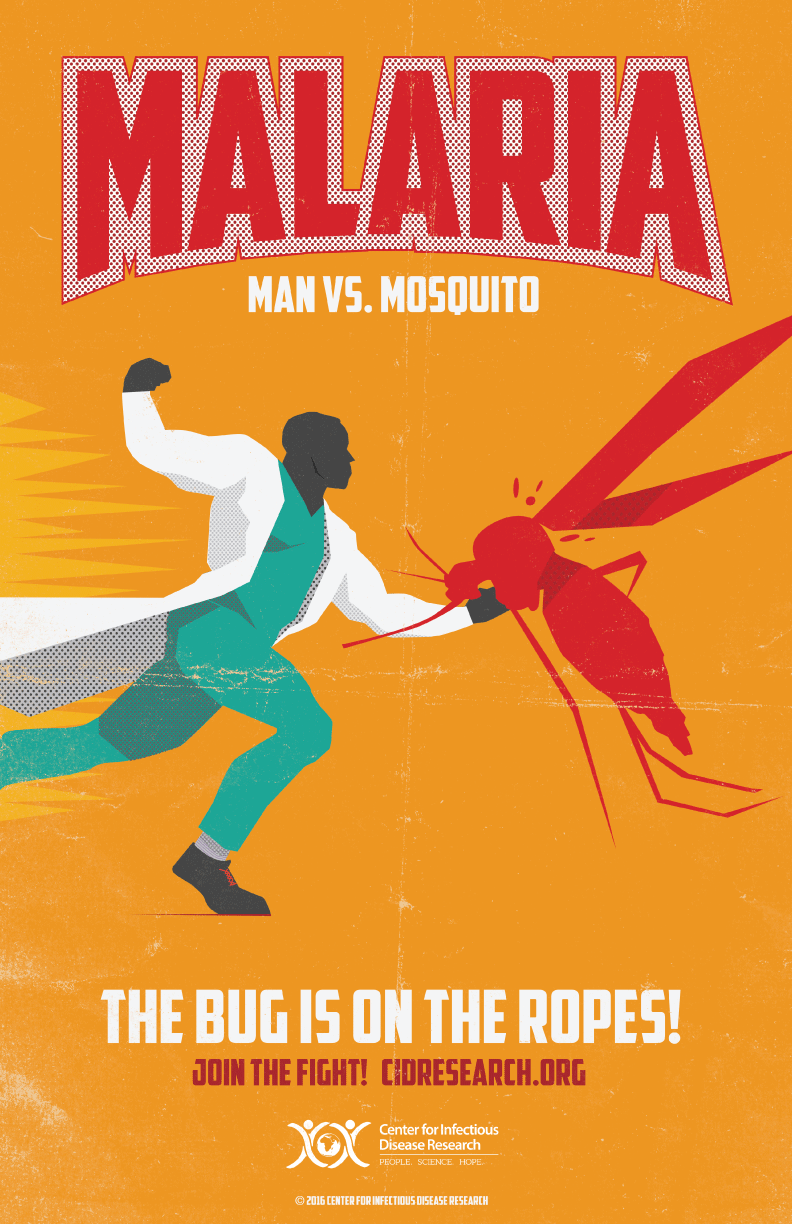
Source: CIDR
Still ranking as one of the deadliest diseases in the world, a vaccine for malaria—a parasitic infection spread by mosquitoes—has remained elusive. Over the years there has been a multitude of targets for vaccine development and glimmers of hope with various vaccine candidates, yet none that have made a significant impact on preventing malaria transmission and slowing mortality rates.
Now, researchers at the Center for Infectious Disease Research (CIDR) and the Fred Hutchinson Cancer Research Center have just published their findings from a clinical trial with human volunteers. The study found that a next-generation malaria vaccine using genetically attenuated parasites (GAPs) shows a favorable safety profile, is well tolerated, and stimulates an appropriate immune response.
“Our approach permanently and uniformly cripples the very complex malaria parasite so that it cannot cause disease and, instead, effectively primes the immune system,” explained senior study investigator Stefan Kappe, Ph.D., professor and director for translational science at CIDR.
Malaria parasites from the genus Plasmodium are transmitted to humans through the female mosquito salivary glands during a blood meal. The injected sporozoites first infect the liver and then the red blood cells, leading to over 200 million infections and nearly a half-million deaths worldwide in 2015. While control measures, such as insecticide-treated bed nets and antimalarial drugs, are making headway against the disease, it is generally accepted that an effective vaccine will be required to eliminate malaria.
This new study describes the novel use of genetically engineered malaria parasites that are weakened by the removal of three specific genes required for the parasite to successfully infect and cause disease in humans. These GAPs are incapable of multiplying in the human liver but are alive and effectively stimulate the immune system to build up defenses that can protect against a real malaria infection.
“We generated a genetically attenuated Plasmodium falciparum (Pf) malaria parasite by deleting three genes expressed in the pre-erythrocytic stage (Pf p52−/p36−/sap1−),” the authors wrote in their paper “Complete Attenuation of Genetically Engineered Plasmodium falciparum Sporozoites in Human Subjects” published in Science Translational Medicine. “We then tested the safety and immunogenicity of the genetically engineered (Pf GAP3KO) sporozoites in human volunteers. Pf GAP3KO sporozoites were delivered to 10 volunteers using infected mosquito bites with a single exposure consisting of 150 to 200 bites per subject. All subjects remained blood stage–negative and developed inhibitory antibodies to sporozoites.”
![Electron microscopy image of <i>Plasmodium</i> sporozoite [WikiCommons]” /><br />
<span class=](https://genengnews.com/wp-content/uploads/2018/08/Malaria1252341802-1.jpg) Electron microscopy image of Plasmodium sporozoite [WikiCommons]
Electron microscopy image of Plasmodium sporozoite [WikiCommons]
“This most recent publication builds on our previous work,” noted Sebastian Mikolajczak, Ph.D., CIDR principal scientist, and GAP project leader. “We had already good indicators in preclinical studies that this new 'triple knock-out' GAP (GAP3KO), which has three genes removed, is completely attenuated. The clinical study now shows that the GAP3KO vaccine is completely attenuated in humans and also shows that even after only a single administration, it elicits a robust immune response against the malaria parasite. Together these findings are critical milestones for malaria vaccine development.”
Attenuation is a commonly used strategy in vaccine development and has been used for viral and bacterial vaccines dating back to Edward Jenner's very first vaccine against smallpox. However, attenuation in most vaccines is achieved by growing the virus or bacteria in culture for long periods of time until the organisms lost some of their virulence, or by using a highly related but nonpathogenic organism. The GAP malaria vaccine was instead created using precise genetic engineering of the malaria parasite and is a unique approach in combating parasitic diseases.
“This report is a major advance in malaria vaccine development by providing the first evidence that genetically attenuated Plasmodium falciparum parasites are safe and immunogenic in humans,” remarked Robert Seder, M.D., chief of cellular immunology at the Vaccine Research Center at the National Institutes of Health, who was not directly involved with the study. “Future studies demonstrating protective efficacy will be the next critical milestone for the continued development of this promising vaccine approach.”
This trial was conducted at the CIDR Human Challenge Center, which is part of the Seattle Malaria Clinical Trials Center (MCTC), an interinstitutional collaboration that includes CIDR and Fred Hutch, among others, in an effort to combat malaria through clinical trials of candidate vaccines and drugs.
“We are very fortunate to have the human malaria challenge model to take the critical next step evaluating the efficacy of GAP3KO in preventing malaria in people,” concluded James Kublin, M.D., medical director of the Seattle MCTC and a Fred Hutch scientist. “The Hutch is looking forward to bringing its expertise in clinical trial design and management to the next stage of tests for this vaccine. The collaborations we have with CIDR and other nearby institutions are what makes Seattle a world leader in the malaria vaccine development and the human challenge model.”






